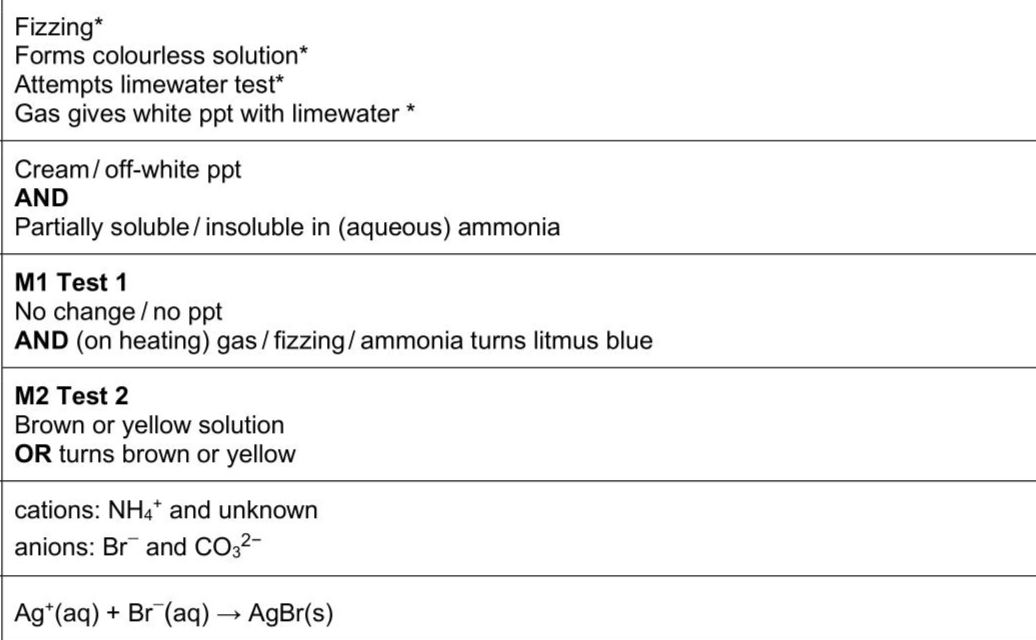(b)FB 9 contains two anions and two cations,three of which are listed in the Qualitative analysis notes. (i)To a small spatula measure of FB 9 in a test-tube,add a 2 cm depth of dilute nitric acid. Record your observations. Keep the resulting solution for the test in(b)(ii). . . [2] (ii)To the solution from(b)(i),add a few drops of aqueous silver nitrate.Then add excess aqueous ammonia.Record your observations. . . [1] (iii) Make an aqueous solution of FB 9 by adding a 5 cm depth of distilled water to a spatula measure of FB 9 in a test-tube. Carry out the following tests on the aqueous solution of FB 9 and record your observations in Table 3.2. (iv) Use your observations in (b)(i), (b)(ii) and Table 3.2 to deduce the formulae of the cations and anions in FB 9. If you are unable to identify an ion, write 'unknown'. cations and anions and (v) Write an ionic equation for the reaction in (b)(ii). Include state symbols.
Exam No:9701_s25_qp_38 Year:2025 Question No:3(b)
Answer:

Knowledge points:
11.3.1 describe the relative reactivity of halide ions as reducing agents
11.3.2.1 aqueous silver ions followed by aqueous ammonia (the formation and formula of the $\left[\mathrm{Ag}\left(\mathrm{NH}_{3}\right)_{2}\right]^{+}$ complex is not required)
11.3.2.2 concentrated sulfuric acid, to include balanced chemical equations
12.1.1 explain the lack of reactivity of nitrogen, with reference to triple bond strength and lack of polarity
12.1.2.1 the basicity of ammonia, using the Brønsted–Lowry theory
12.1.2.2 the structure of the ammonium ion and its formation by an acid–base reaction
12.1.2.3 the displacement of ammonia from ammonium salts by an acid–base reaction
12.1.3 state and explain the natural and man-made occurrences of oxides of nitrogen and their catalytic removal from the exhaust gases of internal combustion engines
12.1.4 understand that atmospheric oxides of nitrogen (NO) can react with unburned hydrocarbons to form peroxyacetyl nitrate, PAN, which is a component of photochemical smog
12.1.5 describe the role of NO in the formation of acid rain both directly and in their catalytic role in the oxidation of atmospheric sulfur dioxide
3.2.1 define ionic bonding as the electrostatic attraction between oppositely charged ions (positively charged cations and negatively charged anions) describe ionic bonding including the examples of sodium chloride, magnesium oxide and calcium fluoride
Solution:
Download APP for more features
1. Tons of answers.
2. Smarter Al tools enhance your learning journey.
IOS
Download
Download
Android
Download
Download
Google Play
Download
Download
